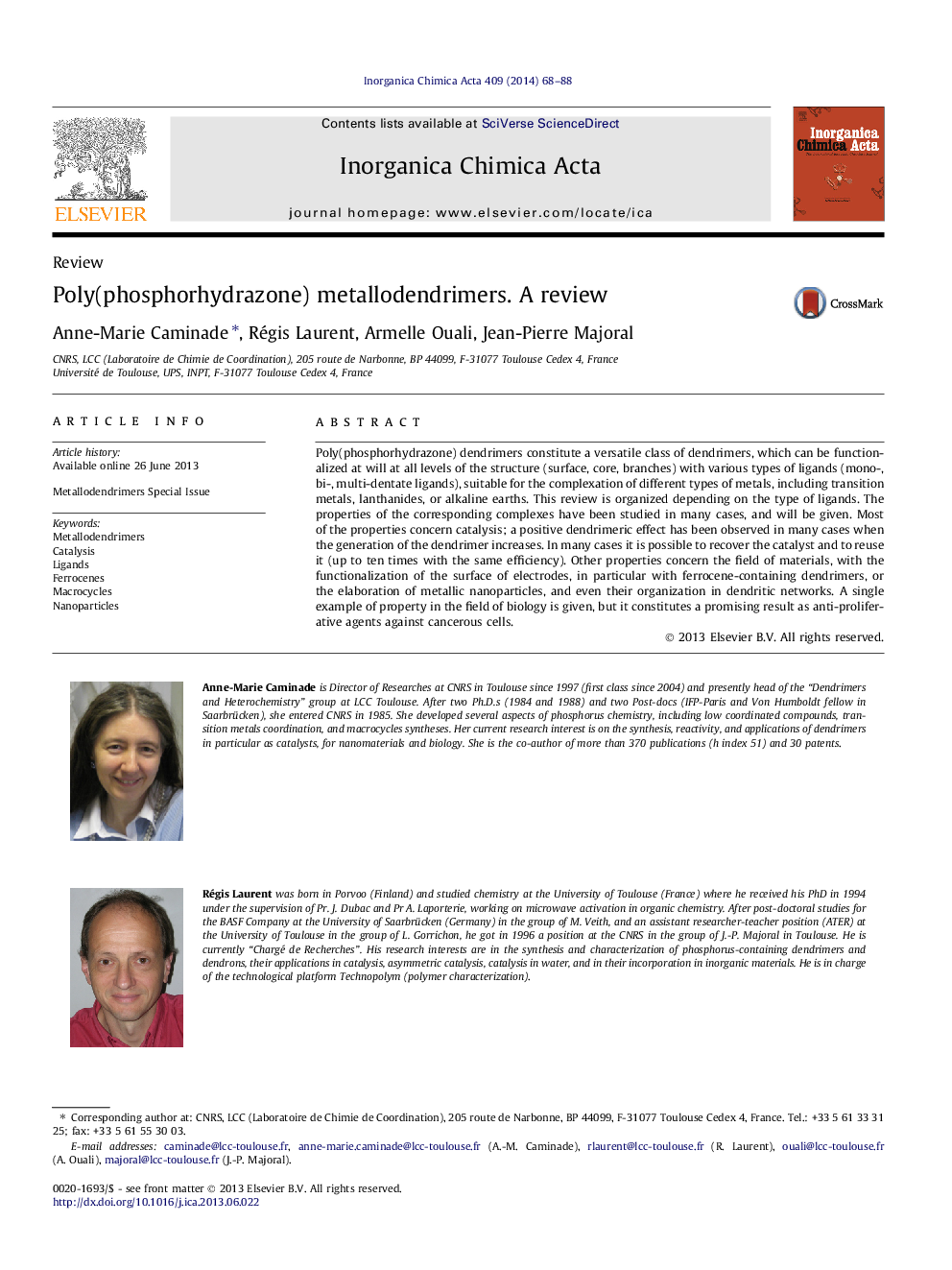| Article ID | Journal | Published Year | Pages | File Type |
|---|---|---|---|---|
| 1310094 | Inorganica Chimica Acta | 2014 | 21 Pages |
•Phosphorhydrazone dendrimers incorporate various ligands in various locations.•Phosphorhydrazone metallodendrimers are versatile, efficient, recyclable catalysts.•Some phosphorhydrazone metallodendrimers are usable in the field of materials.•Some metallodendrimers have anti-proliferative properties against cancerous cells.
Poly(phosphorhydrazone) dendrimers constitute a versatile class of dendrimers, which can be functionalized at will at all levels of the structure (surface, core, branches) with various types of ligands (mono-, bi-, multi-dentate ligands), suitable for the complexation of different types of metals, including transition metals, lanthanides, or alkaline earths. This review is organized depending on the type of ligands. The properties of the corresponding complexes have been studied in many cases, and will be given. Most of the properties concern catalysis; a positive dendrimeric effect has been observed in many cases when the generation of the dendrimer increases. In many cases it is possible to recover the catalyst and to reuse it (up to ten times with the same efficiency). Other properties concern the field of materials, with the functionalization of the surface of electrodes, in particular with ferrocene-containing dendrimers, or the elaboration of metallic nanoparticles, and even their organization in dendritic networks. A single example of property in the field of biology is given, but it constitutes a promising result as anti-proliferative agents against cancerous cells.
Graphical abstractPoly(phosphorhydrazone) dendrimers can be functionalized at will at all levels of the structure (surface, core, branches) with various types of ligands (mono-, bi-, multi-dentate ligands), suitable for the complexation of different types of metals, including transition metals, lanthanides, or alkaline earths. These metallodendrimers are useful catalysis, for the elaboration of materials, and even in biology against cancerous cells.Figure optionsDownload full-size imageDownload as PowerPoint slide
